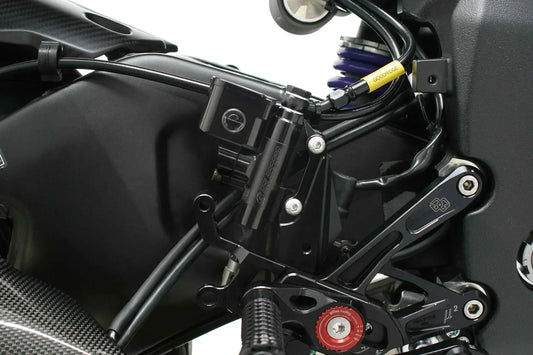When it comes to motorcycle maintenance, brake fluid is often overlooked. But did you know that choosing the right brake fluid can significantly affect your bike's braking performance and overall safety? In this guide, we'll break down the most common types of motorcycle brake fluid—DOT 3 & 4, DOT 5.1, and Racing Brake Fluid—and help you understand which one is right for your ride.
Why Brake Fluid Matters
Brake fluid is responsible for transferring force from your brake lever to the brake calipers, ultimately stopping your motorcycle. Over time, brake fluid can absorb moisture, reducing its effectiveness and potentially leading to brake failure. That's why choosing the right type and maintaining it regularly is crucial.
How DOT Brake Fluid Standards Work
DOT standards specify the performance characteristics of brake fluids. The key factors in DOT brake fluid standards are:
Boiling Point: Higher boiling points prevent vapor lock under high braking temperatures.
Moisture Absorption: Glycol-based fluids (DOT 3, 4, 5.1) absorb water over time, which lowers their boiling point.
Viscosity: Proper viscosity ensures consistent braking performance across different temperatures. Also ABS systems often prefer a lower viscosity to perform best.
Each DOT classification indicates the fluid's minimum performance characteristics. In the next DOT classification, all these aspects require better performance.

DOT performance for the dry boiling point

DOT performance for the wet boiling point
Where does that leave racing brake fluid?
Brake fluid meant for racing has an extremely high boiling point. It is made to perform at the highest level with parts in the braking system reaching far higher temperatures than ever seen in street use.

Boiling points for wet & dry compared to racing brake fluid.
But when it comes to the DOT code, you will almost always notice the packaging says DOT4. The drawback of racing brake fluid is the viscosity comared to DOT 5.1. DOT 5.1 has a lower viscosity which is perfect for ABS and EPS systems, which use micro valves to influence the brake pressure. Because the Racing brake fluid doesn't meet the required viscosity demands it does not get into the DOT 5.1 certification and instead gets the lower DOT 4 label.

The racing fluid on its actual spot in the DOT range.
On track most professionals don't use ABS systems neither does the brake fluid get to low temperatures. Therefore the benefits of the high boiling point outweigh the viscosity.
In racing the fluid is also changed very often, this guarantees very little moisture in the braking system. So the rate of moisture absorption does not play a big role and the high boiling point is the most important factor.
However for street use, where we would like the fluid to survive for a year or two there is no use in using the Racing fluid, after a year the high boiling point has dropped drastically due to the moisture and performance will get similar to DOT 5.1 and DOT4.
DOT 4 Brake Fluid (shop)
- Best for: Everyday riders and standard motorcycles
- Boiling point: Moderate
- Compatibility: Compatible with most motorcycles
- Maintenance: Replace every 1-2 year
We could say this is the standard nowadays, good for everyone really.
DOT 5.1 Brake Fluid (shop)
- Best for: High-performance street motorcycles
- Maintenance: Replace every 1-2 years
- Boiling Point: Higher than DOT 4
- Compatibility: Can be used in systems designed for DOT 4
This is a really sensible option for anyone who demands a little extra from the brakes. Whether it is riding spirited downhill from a mountain pass, trackdays, or a lot of cold wet weather riding. Do you have a bike with ABS and do you ride in lower temperatures, DOT 5.1 is also the better option for you.
Racing Brake Fluid (shop)
- Best for: Track and racing motorcycles
- Boiling point: Extremely high
- Compatibility: Compatible with DOT 4 brake systems
- Maintenance: Replace frequently, often after every race or halfway during the trackday season.
This is for track only race bikes, replace it often, but for racers this is the best way to prevent brake fade. Especially considering the price point it is a the most sensible but the most overlooked step in upgrading the brake system on a track bike.
Frequently asked questions
What about DOT 3 fluid?
A: DOT 3 is the lower and older standard of DOT 4, because of the low price difference we can only advice brake fluid that also matches the DOT 4 standard.
What about DOT 5 fluid?
A: DOT 5 is a silicone-based brake fluid and not commonly used in motorcycles because its not compatible with most braking systems. Unless your bike specifically calls for DOT 5, it's best to avoid it.
Is it okay to mix old and new brake fluid?
A: No, or at least, the point of replacing the brake fluid is getting rid of the old fluid as that contains moisture. Therefore you should pay attention to mix the old and new as little as possible, and completely flush the whole system. Mixing however won't do any real damage to the parts themselves.



